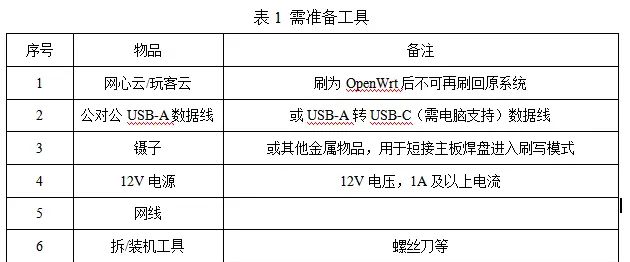1、C++流的类库
C++流的类库是C++标准库中的一个重要组成部分,提供了用于输入和输出的通用流操作接口和功能。C++标准库中的流类库包括了iostream、fstream、sstream和iomanip四个主要的类库。
(1)iostream:iostream类库提供了用于标准输入和输出的流操作接口。它定义了两个主要的类:istream用于输入(如键盘输入),ostream用于输出(如屏幕输出)。iostream类库还定义了一系列的操纵符(manipulator),用于控制输出格式,如setw、setprecision等。
(2)fstream:fstream类库提供了用于文件输入和输出的流操作接口。它定义了三个主要的类:ifstream用于文件输入,ofstream用于文件输出,以及fstream用于文件输入和输出。使用fstream类库,可以方便地读取和写入文件中的数据。
(3)sstream:sstream类库提供了用于内存字符串输入和输出的流操作接口。它定义了两个主要的类:istringstream用于字符串输入,ostringstream用于字符串输出,以及stringstream用于字符串输入和输出。使用sstream类库,可以将字符串作为输入源或输出目标,方便地处理字符串数据。
(4)iomanip:iomanip类库提供了用于流的格式控制的操纵符(manipulator)。它定义了一系列的操纵符,用于控制输出的格式,如设置字段宽度(setw)、设置精度(setprecision)、设置对齐方式(setfill、setiosflags)等。使用iomanip类库,可以方便地控制输出的格式。
C++流的类库提供了一种方便和统一的方式来处理输入和输出。通过使用流操作符(如>>和<<),可以将数据从流中读取或写入到流中,而无需关心底层的具体实现细节。流类库提供了丰富的功能,如格式化输入输出、文件读写、字符串处理等,可以满足各种不同的需求。
在使用流类库时,需要包含相应的头文件,如<iostream>、<fstream>、<sstream>和<iomanip>。使用流类库时,可以通过重载流操作符(<<和>>)来自定义对象的输入和输出方式,以及通过调用类的成员函数来进行相应的操作,如读取和写入数据。同时,流类库也提供了一些成员函数和操纵符,用于控制流的状态和格式。
2、C++输出流
C++输出流是C++流类库中的一部分,用于将数据输出到不同的目标,如屏幕、文件或字符串。下面是五个通俗易懂的例子,展示了C++输出流的不同用法:
(1)输出到屏幕:
#include <iostream>
using namespace std;
int main() {
int num = 10;
float pi = 3.14159;
string name = “Alice”;
cout << “Number: ” << num << endl;
cout << “Pi: ” << pi << endl;
cout << “Name: ” << name << endl;
return 0;
}
这个例子演示了将不同类型的数据输出到屏幕,并使用endl操纵符来换行。
2. 输出到文件:
#include <iostream>
#include <fstream>
using namespace std;
int main() {
ofstream file(“output.txt”);
if (file.is_open()) {
file << “Hello, file!” << endl;
file << “This is a line in the file.” << endl;
file.close();
cout << “File written successfully.” << endl;
} else {
cout << “Unable to open file.” << endl;
}
return 0;
}
这个例子演示了将文本数据写入到文件中。首先创建一个ofstream对象,然后使用该对象的<<操作符将数据写入到文件中。
(3)格式化输出:
#include <iostream>
#include <iomanip>
using namespace std;
int main() {
float pi = 3.14159;
cout << fixed << setprecision(2) << “Pi: ” << pi << endl;
cout << “Hexadecimal: ” << hex << showbase << 42 << endl;
cout << “Binary: ” << bitset<8>(42) << endl;
return 0;
}
这个例子演示了使用iomanip类库中的操纵符来格式化输出。通过设置fixed和setprecision(2),可以保留两位小数;使用hex和showbase,可以输出十六进制数,并显示前缀;使用bitset,可以将整数转换为二进制字符串。
(4)输出到字符串:
#include <iostream>
#include <sstream>
using namespace std;
int main() {
ostringstream oss;
int num = 42;
float pi = 3.14159;
string name = “Bob”;
oss << “Number: ” << num << endl;
oss << “Pi: ” << pi << endl;
oss << “Name: ” << name << endl;
string output = oss.str();
cout << output;
return 0;
}
这个例子演示了使用ostringstream类库将数据输出到字符串。首先创建一个ostringstream对象,然后使用该对象的<<操作符将数据写入到字符串流中。最后,使用ostringstream的str()函数将字符串流中的数据取出,并保存到一个字符串中。
(5) 输出到多个目标:
#include <iostream>
#include <fstream>
using namespace std;
int main() {
ofstream file(“output.txt”);
if (file.is_open()) {
streambuf* coutbuf = cout.rdbuf();
cout.rdbuf(file.rdbuf());
cout << “Hello, file!” << endl;
cout.rdbuf(coutbuf);
cout << “Hello, screen!” << endl;
file.close();
cout << “File written successfully.” << endl;
} else {
cout << “Unable to open file.” << endl;
}
return 0;
}
这个例子演示了将数据同时输出到文件和屏幕。通过保存cout的缓冲区指针,并将其替换为文件流的缓冲区指针,可以将后续的输出重定向到文件。最后,将cout的缓冲区指针恢复为原来的值,可以继续在屏幕上输出。
3、C++流状态
C++流状态表示流的当前状态,包括读取状态和写入状态。通过检查流的状态,我们可以判断流是否正常工作或遇到了错误。C++提供了几个成员函数来获取和设置流的状态,如good()、fail()、bad()和eof()。下面是三个通俗易懂的例子,展示了C++流状态的不同用法:
(1)检查读取状态:
#include <iostream>
using namespace std;
int main() {
int num;
cout << “Enter a number: “;
cin >> num;
if (cin.good()) {
cout << “Read successful!” << endl;
} else {
cout << “Read failed!” << endl;
}
return 0;
}
这个例子演示了使用cin的good()函数来检查读取状态。如果读取成功,即用户输入了一个合法的整数,就输出”Read successful!”;否则输出”Read failed!”。
(2)检查写入状态:
#include <iostream>
#include <fstream>
using namespace std;
int main() {
ofstream file(“output.txt”);
if (file.is_open()) {
file << “Hello, file!”;
if (file.good()) {
cout << “Write successful!” << endl;
} else {
cout << “Write failed!” << endl;
}
file.close();
} else {
cout << “Unable to open file.” << endl;
}
return 0;
}
这个例子演示了使用file的good()函数来检查写入状态。如果写入成功,即内容成功写入到文件中,就输出”Write successful!”;否则输出”Write failed!”。
(3)捕获和处理错误:
#include <iostream>
#include <fstream>
using namespace std;
int main() {
ifstream file(“nonexistent.txt”);
if (file.fail()) {
cerr << “Unable to open file.” << endl;
} else {
string line;
while (getline(file, line)) {
cout << line << endl;
}
file.close();
}
return 0;
}
这个例子演示了使用file的fail()函数来检查文件打开错误。如果文件打开失败,即文件不存在或无法打开,就使用cerr输出错误信息;否则读取文件内容并输出到屏幕。
这些例子展示了C++流状态的不同用法,包括检查读取状态、写入状态以及处理错误。通过检查流的状态,我们可以根据需要采取适当的操作,如继续读取、写入或处理错误。在实际应用中,我们可以根据流的状态来决定程序的执行路径,以保证程序的正确性和可靠性。
4、C++文件操作
C++文件操作是指在C++程序中对文件进行读取、写入、修改和删除等操作。常用的文件操作类包括ifstream、ofstream和fstream,它们分别用于读取、写入和读取和写入文件。下面是十个通俗易懂的例子,展示了C++文件操作的不同用法:
(1)打开文件并写入内容:
#include <iostream>
#include <fstream>
using namespace std;
int main() {
ofstream file(“output.txt”);
if (file.is_open()) {
file << “Hello, file!”;
file.close();
cout << “文件创建并写入成功。” << endl;
} else {
cout << “无法创建文件。” << endl;
}
return 0;
}
此示例使用ofstream类创建一个文件,并将字符串”Hello, file!”写入文件中。如果文件成功创建并写入内容,将输出”文件创建并写入成功。”,否则输出”无法创建文件。”。
(2) 从文件中读取内容并输出到屏幕:
#include <iostream>
#include <fstream>
using namespace std;
int main() {
ifstream file(“input.txt”);
if (file.is_open()) {
string line;
while (getline(file, line)) {
cout << line << endl;
}
file.close();
} else {
cout << “无法打开文件。” << endl;
}
return 0;
}
此示例使用ifstream类打开一个文件,并逐行读取文件内容并输出到屏幕。如果文件成功读取并输出内容,将显示文件内容,否则输出”无法打开文件。”。
(3)检查文件是否存在:
#include <iostream>
#include <fstream>
using namespace std;
bool fileExists(const string& filename) {
ifstream file(filename);
return file.good();
}
int main() {
string filename = “myfile.txt”;
if (fileExists(filename)) {
cout << “文件存在。” << endl;
} else {
cout << “文件不存在。” << endl;
}
return 0;
}
此示例使用ifstream类检查文件是否存在。如果文件存在,输出”文件存在。”,否则输出”文件不存在。”。
(4)向文件追加内容:
#include <iostream>
#include <fstream>
using namespace std;
int main() {
ofstream file(“output.txt”, ios::app);
if (file.is_open()) {
file << ” 这是追加的内容。”;
file.close();
cout << “内容追加成功。” << endl;
} else {
cout << “无法打开文件。” << endl;
}
return 0;
}
此示例使用ofstream类的ios::app模式向文件追加内容。如果内容成功追加到文件中,输出”内容追加成功。”,否则输出”无法打开文件。”。
(5)复制文件:
#include <iostream>
#include <fstream>
using namespace std;
int main() {
ifstream sourceFile(“source.txt”);
ofstream destFile(“destination.txt”);
if (sourceFile.is_open() && destFile.is_open()) {
string line;
while (getline(sourceFile, line)) {
destFile << line << endl;
}
sourceFile.close();
destFile.close();
cout << “文件复制成功。” << endl;
} else {
cout << “无法打开文件。” << endl;
}
return 0;
}
此示例使用ifstream类和ofstream类将一个文件的内容复制到另一个文件中。如果文件成功复制,输出”文件复制成功。”,否则输出”无法打开文件。”。
(6)删除文件:
#include <iostream>
#include <fstream>
using namespace std;
int main() {
string filename = “file.txt”;
if (remove(filename.c_str()) == 0) {
cout << “文件删除成功。” << endl;
} else {
cout << “无法删除文件。” << endl;
}
return 0;
}
此示例使用remove函数删除文件。如果文件成功删除,输出”文件删除成功。”,否则输出”无法删除文件。”。
(7)统计文件中的字符数:
#include <iostream>
#include <fstream>
using namespace std;
int main() {
ifstream file(“input.txt”);
if (file.is_open()) {
int count = 0;
char ch;
while (file.get(ch)) {
count++;
}
file.close();
cout << “文件中的字符数:” << count << endl;
} else {
cout << “无法打开文件。” << endl;
}
return 0;
}
此示例使用ifstream类打开文件,并统计文件中的字符数。如果文件成功打开,输出文件中的字符数,否则输出”无法打开文件。”。
(8)重命名文件:
#include <iostream>
using namespace std;
int main() {
string oldFilename = “oldfile.txt”;
string newFilename = “newfile.txt”;
if (rename(oldFilename.c_str(), newFilename.c_str()) == 0) {
cout << “文件重命名成功。” << endl;
} else {
cout << “无法重命名文件。” << endl;
}
return 0;
}
此示例使用rename函数对文件进行重命名。如果文件成功重命名,输出”文件重命名成功。”,否则输出”无法重命名文件。”。
(9)读取二进制文件:
#include <iostream>
#include <fstream>
using namespace std;
int main() {
ifstream file(“binaryfile.bin”, ios::binary);
if (file.is_open()) {
int value;
while (file.read((char*)&value, sizeof(value))) {
cout << value << ” “;
}
file.close();
} else {
cout << “无法打开文件。” << endl;
}
return 0;
}
此示例使用ifstream类以二进制模式读取文件。如果文件成功打开,输出文件中的整数,否则输出”无法打开文件。”。
(10)将字符串写入二进制文件
#include <iostream>
#include <fstream>
#include <string>
int main() {
std::string str = “Hello, World!”;
std::ofstream file(“output.bin”, std::ios::binary);
if (file.is_open()) {
file.write((char*)&str[0], sizeof(char) * str.length());
file.close();
std::cout << “Binary file written successfully.” << std::endl;
} else {
std::cerr << “Failed to open binary file.” << std::endl;
}
return 0;
}
(11)将结构体写入二进制文件
#include <iostream>
#include <fstream>
struct Person {
int age;
float height;
};
int main() {
Person person;
person.age = 25;
person.height = 1.75f;
std::ofstream file(“output.bin”, std::ios::binary);
if (file.is_open()) {
file.write((char*)&person, sizeof(Person));
file.close();
std::cout << “Binary file written successfully.” << std::endl;
} else {
std::cerr << “Failed to open binary file.” << std::endl;
}
return 0;
}
在上述例子中,我们定义了一个结构体Person,该结构体包含两个成员变量age和height。
我们创建一个Person对象person,并给其成员变量赋值。
然后,我们创建一个ofstream对象file,指定打开文件的名称为output.bin,使用std::ios::binary打开文件以二进制模式。
接下来,我们使用file.write()将person对象以二进制形式写入文件。为了将结构体视为一系列字节,我们使用(char*)&person进行类型转换,并使用sizeof(Person)获取要写入的字节数。
最后,我们检查文件是否成功打开,如果成功则关闭文件,并输出相应的信息。否则,输出错误信息。
























暂无评论内容